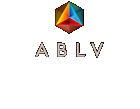Mutual funds’ return as at 31.05.2015:
Since the beginning of 2015 (YTD) |
2014 |
2013 |
2012 |
Annualised return since the inception moment |
|
| Government Bond Funds | |||||
| ABLV Emerging Markets USD Bond Fund | 4,44% | 2,75% | -3,94% | 15,63% | 5,27% |
| ABLV Emerging Markets EUR Bond Fund | 4,34% | 1,83% | 0,92% | 15,88% | 4,33% |
| Corporate Bond Funds | |||||
| ABLV High Yield CIS USD Bond Fund | 21,41% | -16,58% | 2,20% | 17,96% | 4,90% |
| ABLV High Yield CIS RUB Bond Fund | 17,18% | -10,21% | 7,00% | - | 5,57% |
| Global Market Corporate Bond Funds | |||||
| ABLV Global Corporate USD Bond Fund | 3,29% | 0,34% | - | - | 2,83% |
| ABLV European Corporate EUR Bond Fund | 3,27% | 3,30% | - | - | 5,21% |
| Stock Funds | |||||
| ABLV Global USD Stock Index Fund | 4,40% | -0,26% | 10,24% | 9,33% | 2,38% |
| ABLV Global EUR Stock Index Fund | 12,13% | 3,84% | 3,26% | 11,67% | 0,87% |
| ABLV US Industry USD Equity Fund | 3,03% | 6,95% | - | - | 8,67% |
| ABLV European Industry EUR Equity Fund | 14,38% | 2,09% | - | - | 10,88% |
| Total Return Funds | |||||
| ABLV Multi-Asset Total Return USD Fund | - | - | - | - | -1,58% |
The comment of ABLV Asset Management, IPAS
In the financial market, May turned to be more or less quiet. On the first days of the month, an inertial movement because of the events at the end of April about which we wrote in the previous comment was noticed. However, at that time the markets became calmer and entered the stage of consolidation. Apparently, the majority of the market members came to a conclusion that a sharp sell-off of German government bonds (Bunds) at the end of April and in the beginning of May having caused a certain dismay in the financial markets was just a technical correction, therefore, at first sights of Bunds stabilization previous tendencies came back to the markets.
In the first half of the month, news background for the global stock market remained rather neutral — the season of corporate reports finished, macroeconomic data were varying, therefore the dynamics of separate stock indexes were determined by local factors. Due to the lack of new ideas in the majority of stock markets, quiet conditions and last month tendencies settled: the drop in the rate of US dollar, the price growth in the commodity market and correspondingly the outperformance of stock markets in the emerging countries, the price growth of companies shares from the raw materials sectors.
However, the ECB again disturbed this quiet run of events. The Member of the Executive Board of the ECB Benoit Coeure announced that the QE programme will be advanced in May and June due to the low liquidity in the market in July and August. This announcement caused a sharp turn in the currency market leading to the renewal of US dollar growth, and that, in its turn, to the decrease of prices in the commodity markets. As a result, recent leaders quickly turned into outsiders having experienced strong pressure from traders.
At month-end, the market of emerging countries suffered biggest losses, largely due to the fall in local currencies exchange. Tendencies in the currency and commodity markets determined the preferences of investors within the equity markets of the USA and Europe. In the US market, the sectors of technologies, health and finances showed the best dynamics. In turn, raw materials sectors suffered significantly big losses together with company shares of telecommunication and transport sectors that turned to be “worse than the market”. In European equity market, the situation was rather consistent — company shares of the majority of sectors at month-end showed positive yield, with only company shares of raw materials sectors showing decline.
In the global bond market, the investors took up a wait-and-see attitude, paying particular attention to Bunds and US Treasuries. The sharp growth of yield of Bunds from 0.16% up to 0.80% for 10-year securities within 6 days (that corresponds to the fall in price by around 6%) caused strong pressure on the segment of bonds with High Grade, both government and corporate, in which a significant fall in price took place. In these conditions, the segment of High Yield bonds due to its attractive yield and positive dynamics in the commodity markets remained rather stable. Under neutral news background and with a limited offer, the growth of Russian corporate bonds continued, the yield of which remained to be high in comparison with a general level of yield in the global bond market. The growth decline in the commodity market at the end of the month led to a certain correction but it turned to be very insignificant taking into account the growth in previous months.
In the mid-run, we expect the stabilisation of the market and the decline of volatility. The main attention of investors will be kept over the US macroeconomic statistics, according to which market members will try to forecast the actions of the FRS in respect of the changes of the key interest rate.
Additional information is available at ABLV Bank home page in the section “ABLV Mutual Funds”.


